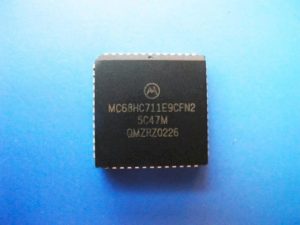Crack Freescale MC68HC711E9 Memory
When the STOP instruction executes, the SIM drives the SIMOSCEN signal low, disabling the CGM and holding low all CGM outputs (CGMXCLK, CGMOUT, and CGMINT) which will be able to facilitate the process of Crack Freescale MC68HC711E9 Memory.
If the STOP instruction is executed with the VCO clock, CGMVCLK, divided by two driving CGMOUT, the PLL automatically clears the BCS bit in the PLL control register (PCTL), thereby selecting the crystal clock, CGMXCLK, divided by two as the source of CGMOUT. When the MCU recovers from STOP, the crystal clock divided by two drives CGMOUT and BCS remains clear when Retrieve MCU Silicon Laboratories C8051F530.
The system integration module (SIM) controls whether status bits in other modules can be cleared during the break state. The BCFE bit in the SIM break flag control register (SBFCR) enables software to clear status bits during the Crack Freescale MC68HC711E9 Memory state.
To allow software to clear status bits during a break interrupt, a 1 should be written to the BCFE bit. If a status bit is cleared during the break state, it remains cleared when the MCU exits the IC break state.
To protect the PLLF bit during the break state, write a 0 to the BCFE bit. With BCFE at 0 (its default state), software can read and write the PLL control register during the break state without affecting the PLLF bit. The acquisition and lock times of the PLL are, in many applications, the most critical PLL design parameters only after Unlock MCU Chip Microchip PIC16F946. Proper design and use of the PLL ensures the highest stability and lowest acquisition/lock times.


